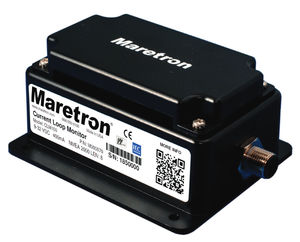
- Company
- Products
- Catalogs
- News & Trends
- Exhibitions
Boat network interface TMP100temperature probe
Add to favorites
Compare this product
Characteristics
- Options
- for boats, temperature probe
Description
Maretron's TMP100 measures the temperature for up to 6 temperature probes and reports the information over an NMEA 2000® network. The TMP100 supports up to 4 thermistor probes and 2 high temperature thermocouple probes. Optional thermistor probes (-20°C to 80°C or -4°F to 176°F) cover a wide range of applications including cabin air temperature, engine room air temperature, refrigerator/freezer temperature, under bolt temperature (inverters, charges, pumps, motors, etc.), tank temperatures (live well bait, hot water, etc.), and air duct temperatures. The optional thermocouple probes (0°C to 900°C or 32° to 1652°F) are used to measure Exhaust Gas Temperature (EGT) as part of a comprehensive fuel management system.
Best of all, the TMP100 is NMEA 2000® certified so you can view any and all temperature information anywhere on the vessel using a compatible NMEA 2000® display. The TMP100 is a key component of Maretron's N2KView® vessel monitoring and control system.
Features
Six external temperature probes are measured and broadcast Over NMEA 2000® network
Four channels for thermistor probes and two channels for high temperature thermocouple probes
Wide variety of applications supported with optional temperature probes
Applications
Cabin temperature
Engine room temperature
Under bolt temperature (Inverters, chargers, pumps, etc.)
Refrigerator / freezer temperature
Tank temperatures (Live well bait, hot water, etc.)
Air duct temperature
Exhaust gas temperature
Catalogs
Exhibitions
Meet this supplier at the following exhibition(s):


Related Searches
- Boat antenna
- Boat sensor
- Temperature sensor
- Boat screen
- Depth transducer
- Multi-function screen
- Ultrasonic sensor
- Display
- Boat display
- Ship software
- Digitall display
- Multi-function display
- Through-hull transducer
- GPS antenna
- Boat software
- NMEA 2000® sensor
- Maretron network interface
- Navigation software
- Meteorological station
- Boat network interface
*Prices are pre-tax. They exclude delivery charges and customs duties and do not include additional charges for installation or activation options. Prices are indicative only and may vary by country, with changes to the cost of raw materials and exchange rates.








